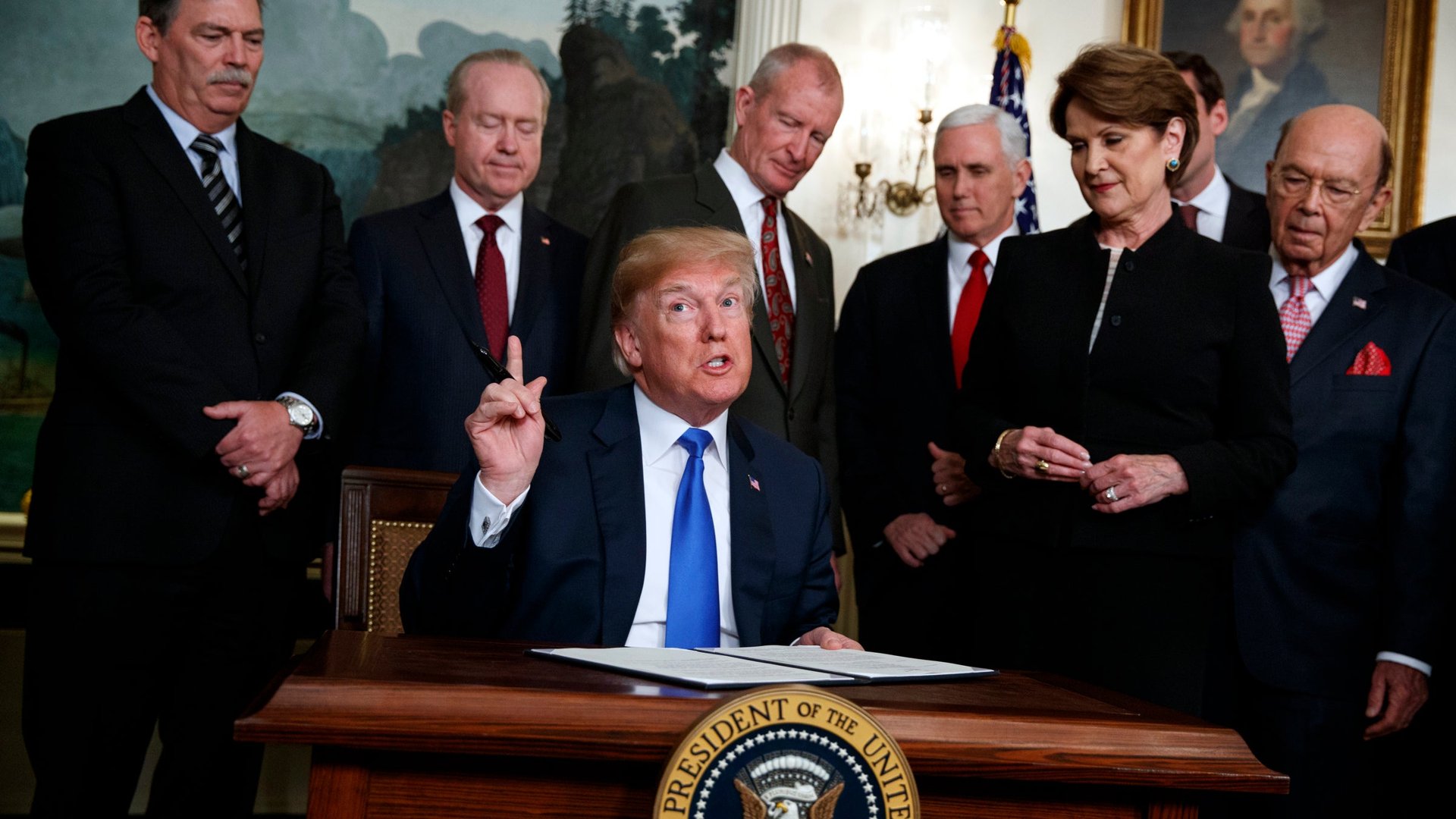Here’s who really benefits from Donald Trump’s trade negotiations
At first glance, Donald Trump appears to take a different approach to trade than predecessors George W. Bush or Barack Obama, who saw trade liberalization as a goal.


At first glance, Donald Trump appears to take a different approach to trade than predecessors George W. Bush or Barack Obama, who saw trade liberalization as a goal.
Trump is far more willing to cross trading partners and rivals alike in defense of US industry. But the positions adopted by his administration suggest that the most controversial features of recent trade deals—end-runs around domestic lawmakers to impose unpopular rules on behalf of corporate interests, and privileging investors over workers—remain key parts of the Trump toolkit.
US corporations and investors stand to gain from his trade restrictions, but the potential benefits to workers remain harder to pin down. In NAFTA talks, the US is undermining public health rules. Steel and aluminum tariffs will benefit investors in raw metals, but it’s not clear that American workers come out on top. And with the announcement of new levies on Chinese imports, the US is arguing for rules that ultimately make outsourcing easier.
And none of that considers the potential cost of retaliatory policies from other countries.
Helping corporations keep health warnings off foods
In many contemporary trade deals, negotiators are focused as much on ensuring that regulations in different economies are similar as they are on cutting tariffs. Sometimes this can be positive, like pushing for higher safety standards or more protection for labor. Other times, it can be pernicious: In the Trans-Pacific Partnership negotiations, the Obama administration carried water for drug makers who demanded extraordinary protections for their intellectual property. (Those rules were left out of the TPP when it was adopted by eleven nations, excluding the US.)
In current NAFTA talks, US representatives are pushing for rules that would prevent countries from putting warning labels on food for high sugar or fat content. Such restrictions are backed by corporations that don’t want to alter their recipes or packaging for export—and would also prefer if their US products weren’t labeled that way, either. But Mexican officials in particular see public health problems like obesity linked to the onslaught of sugary, processed foods that came with NAFTA.
Cigarette companies have used trade negotiations as a way to avoid labeling restrictions imposed by local lawmakers, though TPP negotiators created a broad public health exceptions designed to prevent their abuse in that pact. Now, US negotiators are trying to weaken that exception by blocking health-focused warning labels highlighting fat and sugar content. Such rules are hard to justify as beneficial for the Mexican public, much less American workers.
Riddled with exceptions, steel and aluminum tariffs benefit stockholders
Similar considerations are at work in the latest tariff policies.
The steel and aluminum tariffs that go into effect on midnight on March 23 are supposedly designed to protect American steelworkers. Trade proponents have argued this policy will cost more jobs than it gains, since companies faced with rising prices for raw materials will likely cut workers. Proponents of trade restrictions have said these studies overstate job loss—but their best case scenario is that tariffs will “lead to no net change in national employment levels once equilibrium is reached.” Not exactly a victory for the working man.
Given the number of exceptions proposed by the White House, the policy appears to be symbolically powerful enough to anger US trading partners into costly retaliation, but unlikely to shift prices enough to re-shape the domestic metal industry. Metal mill stock prices may rebound, but technological change is the reason that employment has fallen at their facilities. Owners of steel mills may see their market share rise at the expense of poor countries without the political clout to win an exemption from the tariffs. The ostensible target of the policy, China, which has flooded world markets with cheap metals, is unlikely to be directly effected.
How much intellectual property are middle-class Americans taking overseas?
The newest round of proposed tariffs target China in punishment for practices that US corporations say have led to the theft of their intellectual property. The tariffs will effect some $50 billion worth of imports, about 10% of what the US purchases from Chinese firms each year. Stock prices at US exporters fell, ostensibly out of fears of Chinese retaliation.
Without yet knowing the specific industries that will be targeted, it is hard to forecast their impact on the US economy. But defending intellectual property is about protecting the value of companies who own copyrights, trademarks, or patents on drugs, biotechnology or advanced chips which they manufacture abroad. Or, those like the Trump Organization, which license their brand and likenesses to foreign companies. The best case scenario is that China relaxes its rules requiring foreign firms share technology with domestic partners.
Which means, with these new tariffs, Trump is fighting to make it easier for US companies outsource to China without worrying about their IP being stolen—not trying to bring those jobs back to the US.